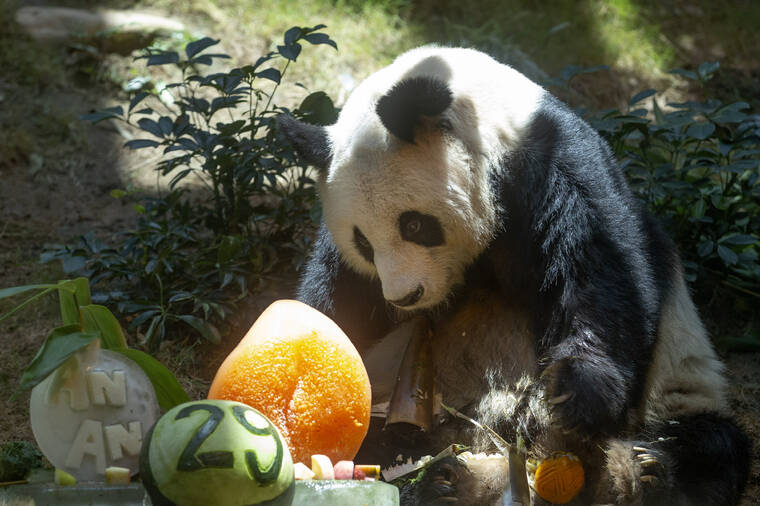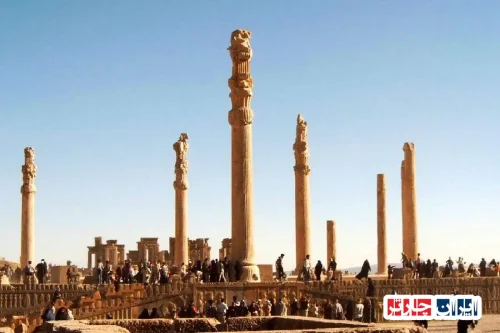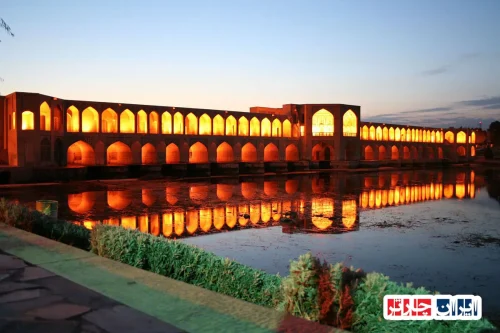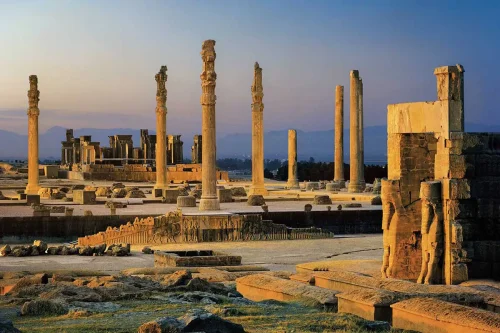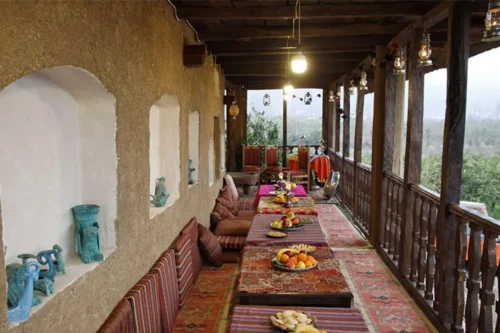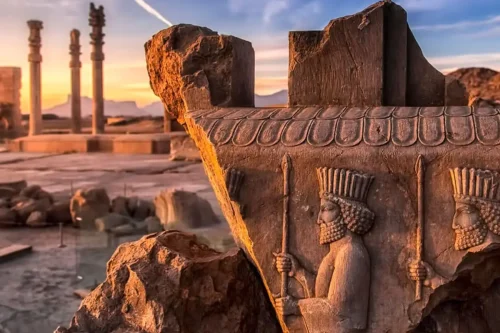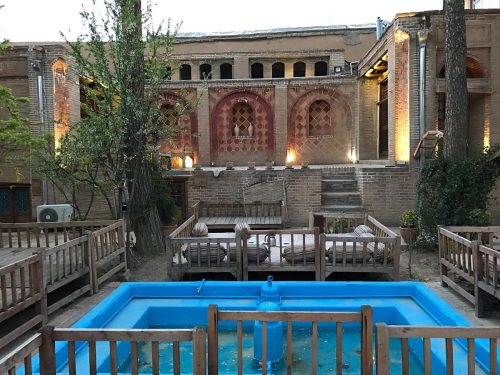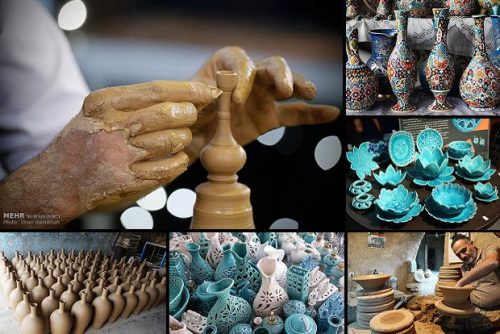News Source : https://www.irna.ir/news/85678392/%DB%B2%DB%B5%DB%B0%DB%B0-%D9%BE%D8%A7%D9%86%D8%AF%D8%A7-%D8%A8%D9%87-%D8%A7%D8%B3%D8%AA%D9%82%D8%A8%D8%A7%D9%84-%DA%AF%D8%B1%D8%AF%D8%B4%DA%AF%D8%B1%D8%A7%D9%86-%D8%AF%D8%B1-%D9%87%D9%86%DA%AF-%DA%A9%D9%86%DA%AF-%D9%85%DB%8C-%D8%A2%DB%8C%D9%86%D8%AF
2,500 Pandas Welcome Tourists in Hong Kong
Tehran – IRNA – Aiming to attract tourists, Hong Kong has unveiled 2,500 panda statues at Hong Kong airport as part of the “Panda Economy” initiative. This is the largest exhibition featuring pandas ever held. According to IRNA from the Daily Telegraph, 2,500 giant panda statues are set to welcome residents and tourists in Hong Kong. One of the designated spots for some of these pandas is Ocean Park, home to panda twins, their parents, and two other pandas gifted by Beijing this year. Hong Kong’s tourism industry representatives are optimistic about the potential impact of the panda exhibition, hoping to increase visitor numbers. Businesses are encouraged to capitalize on the popularity of pandas to benefit from what some lawmakers call the “Panda Economy”. Eminent figures like American singer Pharrell Williams have been invited to create special panda designs for the exhibition. Six large statues are made from recycled materials and will be auctioned online for charity, with proceeds supporting Ocean Park’s efforts to conserve giant pandas. In late September, Hong Kong received a pair of pandas from Beijing in a grand ceremony to promote tourism in the region. “An An” and “Ke Ke” are the third pair of giant pandas sent to Hong Kong by China since 1997. The other Hong Kong-born pandas known as “Ying Ying” became the oldest pandas to become twin mothers last month. Hong Kong is now home to 6 pandas, including the new arrivals, the twins, their mother, and their father named “Le Le”. The newly arrived pandas are housed in Ocean Park, an aquarium and zoological destination long popular with residents and tourists in Hong Kong. Authorities also encourage companies to utilize the popularity of pandas and newly born cubs to tap into the “Panda Economy”. China’s strategy of lending giant pandas to overseas zoos has long been viewed as a tool for Beijing’s soft power diplomacy. Giant pandas are only found in Southwestern China and are an endangered population. This move reflects Hong Kong’s use of pandas to boost its economy as it strives to regain its position as one of Asia’s top tourist destinations. Pandas are unofficially regarded as China’s national symbol. China’s program of lending giant pandas to foreign zoos has long been considered a tool for soft power diplomacy. According to the World Wildlife Fund, the average lifespan of pandas in the wild is 14 to 20 years, while in captivity, it extends to 30 years.
Introduction to the Panda Economy Program in Hong Kong
An innovative program titled “Panda Economy” has been launched by Hong Kong authorities to increase tourist attraction to this major Asian city using 2,500 panda statues. This program is designed to enhance the tourism industry and offer a unique experience to visitors.
Panda Exhibition at Hong Kong Airport
Hong Kong International Airport is hosting the largest panda exhibition featuring 2,500 panda statues. Utilizing modern technologies and creative designs, this exhibition has become one of the main attractions for travelers.
Locations of Panda Exhibits at Ocean Park
One of the areas where pandas are stationed is Ocean Park. This well-managed biological park is home to twin cubs and their parents, as well as two other pandas gifted by Beijing.
Economic Impact of Recycling Materials in Panda Sculptures
Recycled materials have been used in the creation of six large panda sculptures. This initiative not only helps preserve the environment but also demonstrates Hong Kong’s commitment to sustainable development and the circular economy.
Presence of Celebrities at the Panda Exhibition
To increase the exhibition’s appeal, famous personalities like Pharrell Williams, a renowned American singer, have been invited to create special panda designs. These collaborations have drawn worldwide attention to the exhibition.
Charitable Support for Ocean Park by the Panda Exhibition
Most special panda statues are auctioned online, with the proceeds donated to Ocean Park. This financial support aids in the preservation and care of giant pandas and plays a vital role in conserving this environmental species.
History of Hong Kong Panda and Dependency on China
Never did we imagine that Hong Kong pandas would play a significant role in the city’s tourism development. Since 1997, China has embarked on a program to lend its giant pandas to overseas zoos, and Hong Kong has been one of the first destinations in this program.
Newly Arrived Pandas and Their Impact on Hong Kong Tourism
The new pandas, including the twins, their mother, and their father “Le Le,” have quickly become a major attraction for tourists. Their presence in Ocean Park and local zoos delivers an unforgettable experience for visitors.
Future of the Panda Economy Program and Panda Population Preservation
Despite the high costs of caring for pandas, authorities are hopeful that the number of visitors to the panda exhibition will increase. This increase can provide the necessary financial resources to preserve and expand the panda population, thereby playing a critical role in conserving this species.
FAQ
- What is the ‘Panda Economy’ program?
- The ‘Panda Economy’ program is an initiative in Hong Kong aimed at attracting tourists through the display of 2,500 panda statues at Hong Kong Airport.
- How many panda statues are there in Hong Kong?
- In this program, 2,500 panda statues have been unveiled at Hong Kong Airport.
- Where are the panda statues located in Hong Kong?
- One of the primary locations for these statues is Ocean Park, where the twin cubs, their parents, and the gifted pandas reside.
- What is Ocean Park’s role in the panda exhibition?
- Ocean Park serves as a base for some of the pandas and provides a suitable habitat for the twin cubs, their parents, and the gifted pandas.
- What do Hong Kong tourism industry representatives think about the panda exhibition?
- Hong Kong tourism industry representatives are pleased with the potential impact of the panda exhibition and hope that it will increase visitor numbers.
- Which celebrities are involved in the panda exhibition?
- Celebrities invited to create special panda designs include Pharrell Williams, the famous American singer.
- What materials are used to create the large panda statues?
- Six large statues at the exhibition are made using recycled materials.
- What happens to the special panda statues after the exhibition?
- Most of these special statues are auctioned online, with proceeds going to Ocean Park to support panda preservation efforts.
- When did Hong Kong receive new pandas from Beijing?
- Hong Kong received a pair of pandas from Beijing in late September this year.
- What are the names of the pandas in Hong Kong?
- The pandas in Hong Kong include ‘An An’, ‘Jia Jia’, ‘Ying Ying’, and ‘Le Le’.
- Where are the newly arrived pandas kept?
- New arrivals are housed in Ocean Park, the zoo, and the aquarium.
- How are companies encouraged to capitalize on the pandas’ popularity?
- Authorities encourage companies to leverage the popularity of pandas and newborn cubs to capitalize on economic opportunities, termed as the ‘Panda Economy’.
- What is China’s program for lending pandas to overseas zoos?
- China’s program of lending giant pandas to overseas zoos is considered a diplomatic soft power tool by Beijing.
- How are panda conservation efforts progressing?
- Giant pandas live in southwestern China, and their population is endangered, prompting conservation programs to support them.
- How does Hong Kong use pandas to boost its economy?
- Hong Kong uses pandas as an unofficial national symbol of China to strengthen its economy by hosting exhibitions and attracting tourists, aiming to re-establish itself as a top Asian tourism destination.
- What is the lifespan of pandas in the wild and in captivity?
- Pandas have an average lifespan of 14 to 20 years in the wild, but they can live up to 30 years in captivity.

